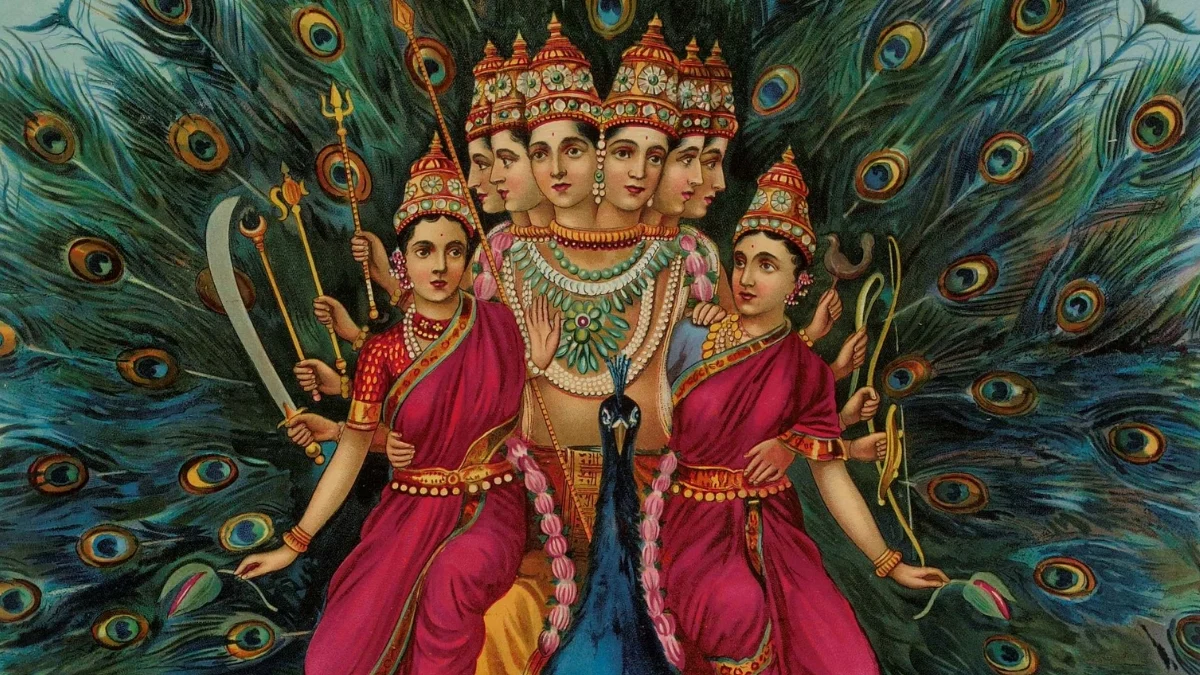
Hinduism, from its ancient scriptures to modern practices, features a diverse range of gods and goddesses who represent powerful forces like creation, morality, protection, knowledge, and freedom. These divine beings express their power in many ways – through building and destroying worlds, maintaining balance, controlling natural elements, offering wisdom, or providing the energy that drives the universe. This overview introduces key deities mentioned in important Hindu texts like the Vedas, Upanishads, and Puranas, detailing their areas of influence, symbols, mantras, and common depictions. Each entry explains the qualities and stories traditionally found in scriptures and expressed through religious devotion, using traditional names and titles.
Vayu
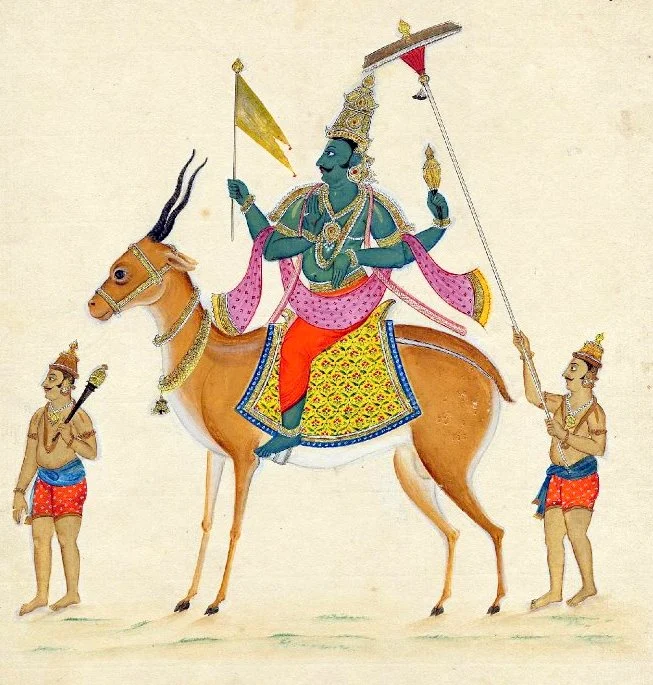
Vayu is the Hindu god of wind and breath, described in ancient hymns as a fast-moving force that carries scents and sustains life. He’s often seen as a powerful ally of the god Indra, especially in stories of war. Images of Vayu frequently depict him riding a swift antelope or chariot, symbolizing his speed and ability to be everywhere. Many spiritual practices focus on controlling the breath, believing it connects to Vayu’s energy within the body.
Agni
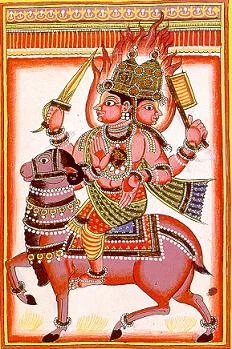
In ancient Vedic traditions, Agni is considered the holy fire and a link between people and the gods. He receives offerings and carries prayers upwards. Described as an eternal flame born from wood, Agni appears in many forms – from a home fireplace to lightning and the sun. Rituals and ceremonies always begin with Agni, who represents a connection between earth, the air, and the heavens. He embodies change and is essential to maintaining the sacred order of things.
Surya
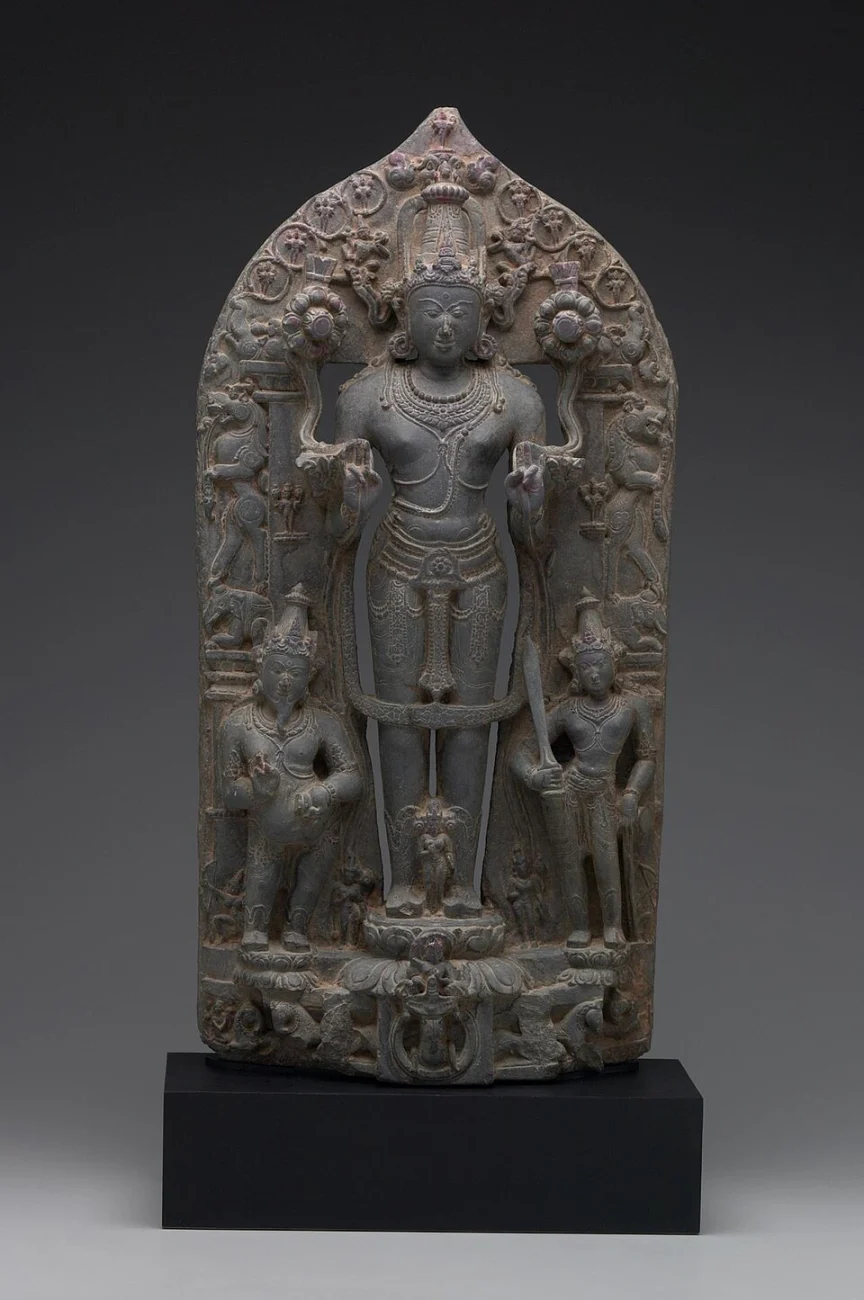
Surya is the god of the sun, celebrated for bringing light and chasing away darkness. He’s often pictured riding a chariot pulled by seven horses, representing the days of the week or the sun’s life-giving rays. The Gayatri mantra is a special prayer dedicated to Surya’s power, believed to inspire intelligence and righteousness. People honor Surya through temples and daily prayers, seeking good health, energy, and the promise of a new day.
Yama
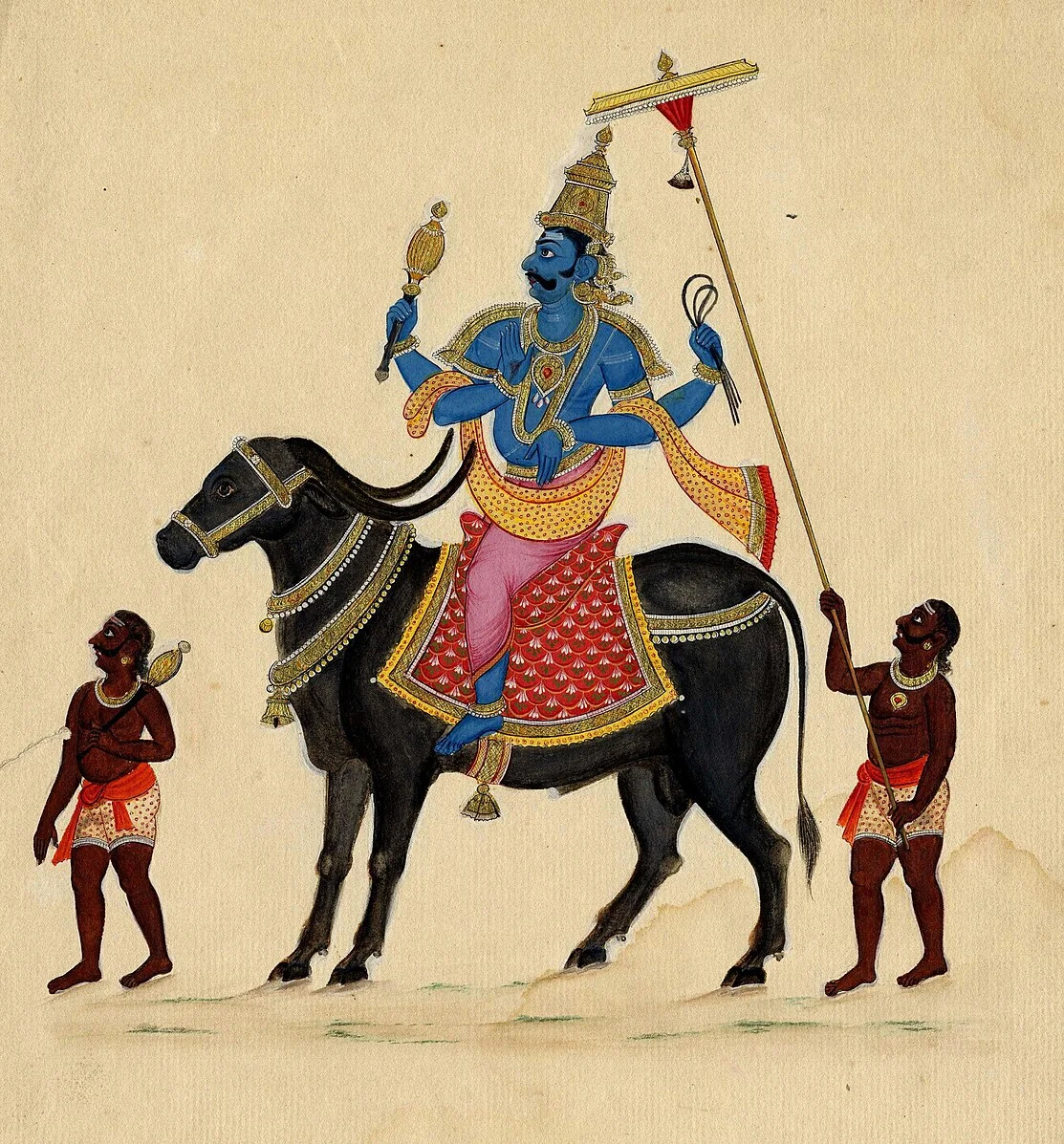
Yama is the god of justice and death, and is believed to be the first being to experience mortality. He judges people’s actions and determines their fate based on karma. His assistants and the rope he carries represent the certainty of death and the natural order of things. Yama is often portrayed as serious but just, maintaining moral balance and guiding souls after life.
Indra
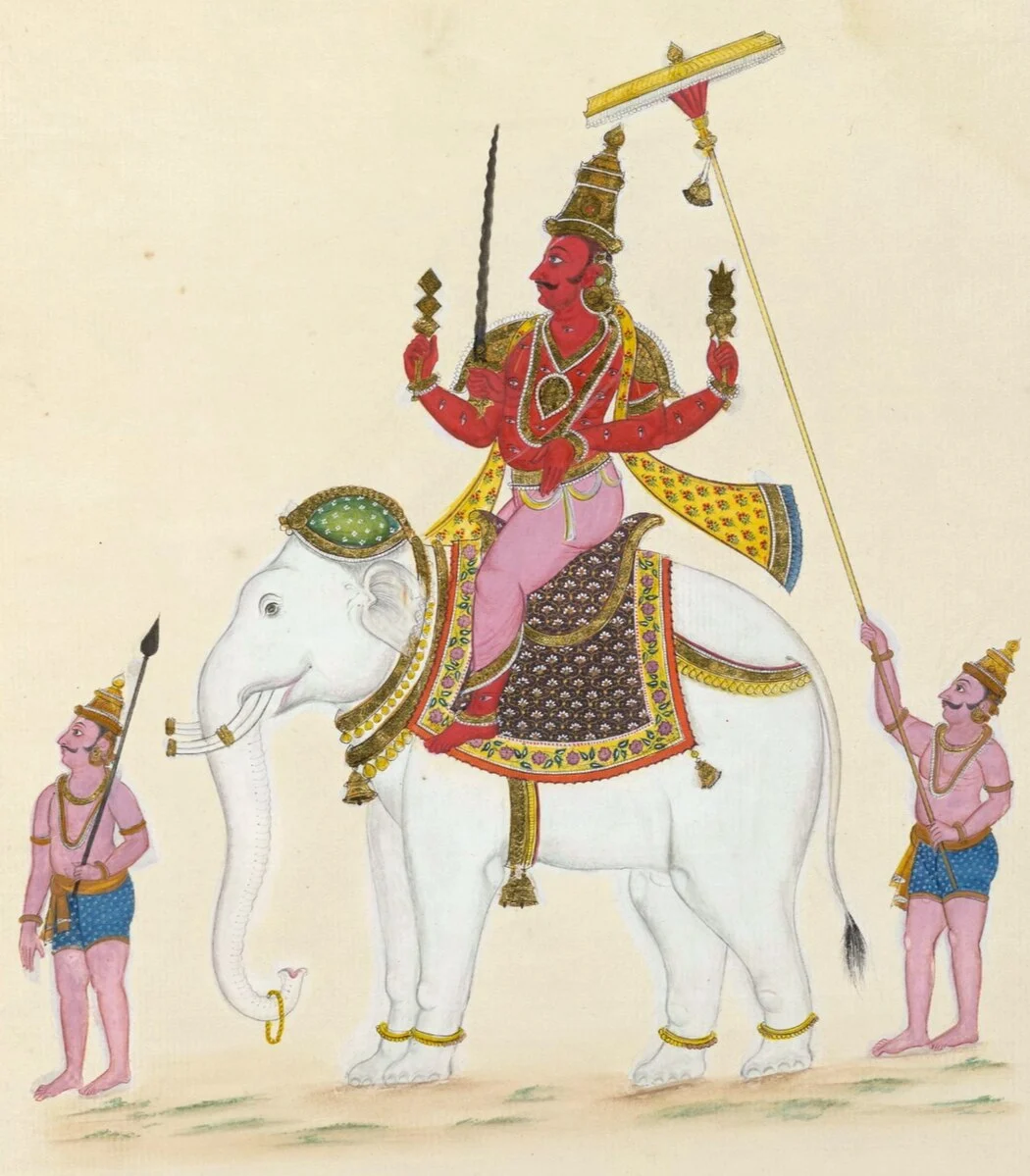
In many ancient stories, Indra is the powerful king of the gods, known for wielding a thunderbolt. He’s famous for defeating a serpent to free trapped waters and for upholding the balance of the world. Stories describe him as a brave warrior who supports his friends, enjoys a sacred drink called soma, and grows stronger with praise. He rides a magnificent elephant named Airāvata and commands the storms, demonstrating his power over the sky and his triumph over challenges.
Hanuman
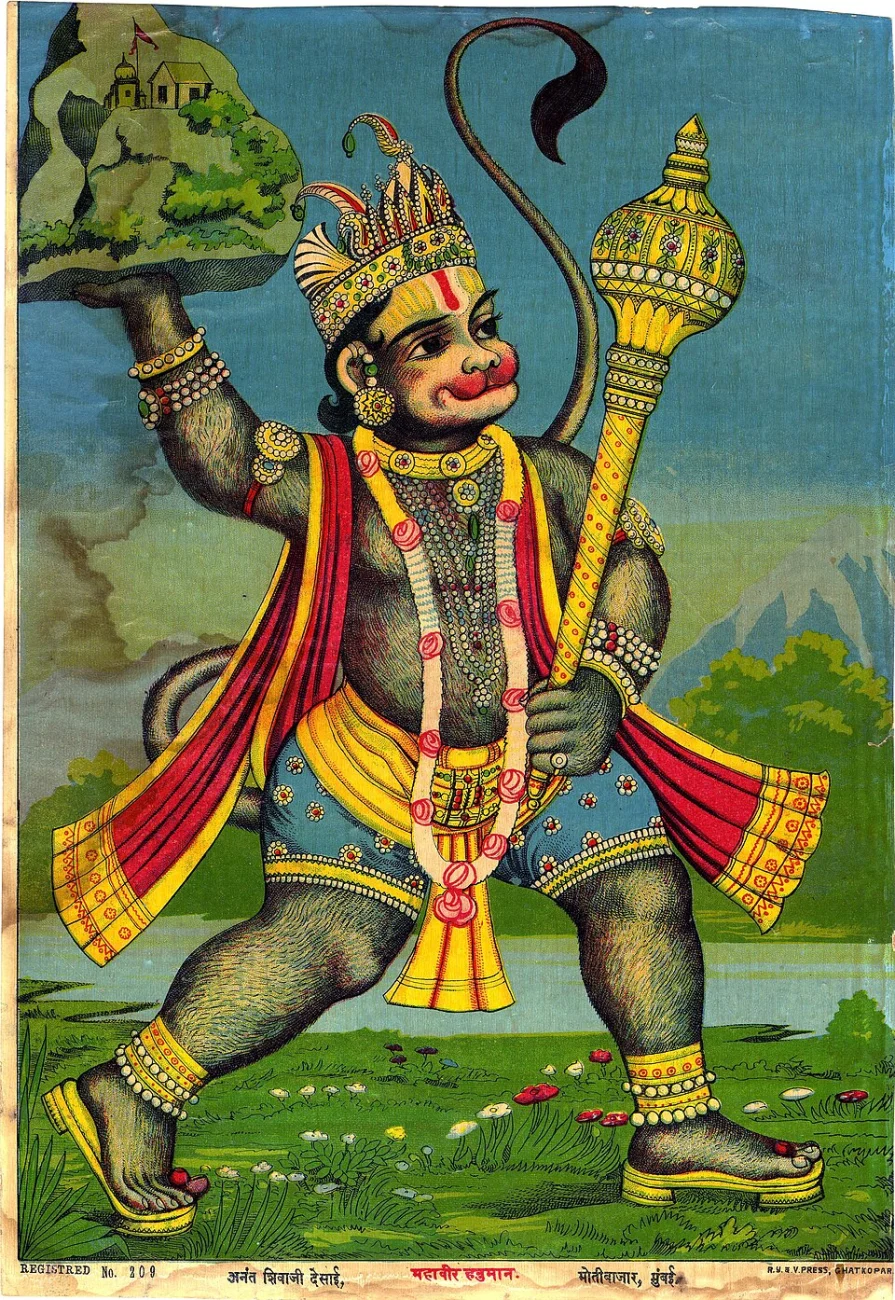
Hanuman, often called the son of the wind, is a symbol of deep devotion, incredible courage, and complete control of both body and mind. Stories tell of his amazing jump to Lanka, his selfless strength, and his knowledge of healing and sacred chants – even bringing an entire mountain to save a life. He’s worshipped as a protector from difficulties and a perfect example of staying true to what’s right. People visit temples dedicated to him all over India and the world, seeking his blessings for strength, endurance, and a clear mind.
Ganesha
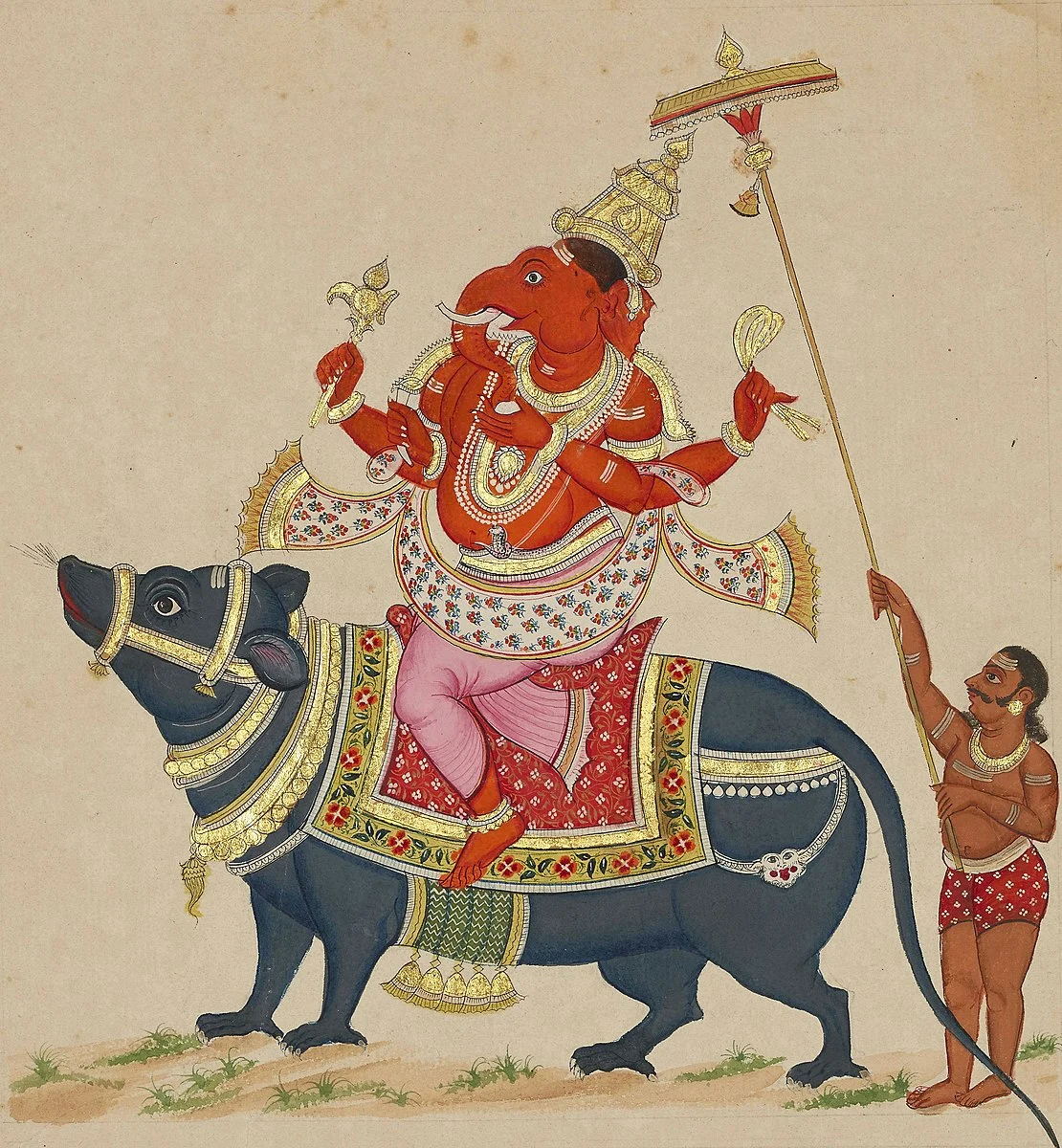
Ganesha is known as the one who clears away obstacles and helps new things begin. He’s also considered a guide for intelligence and the arts. His elephant head represents good judgment and careful listening, and his broken tusk shows he willingly sacrifices for wisdom. People often honor Ganesha at the start of any important activity, believing it will lead to success. The sweet treat he’s often shown with, his mouse mount, and the tools he holds all symbolize control over temptations and the ability to find the right path.
Skanda (Kartikeya)
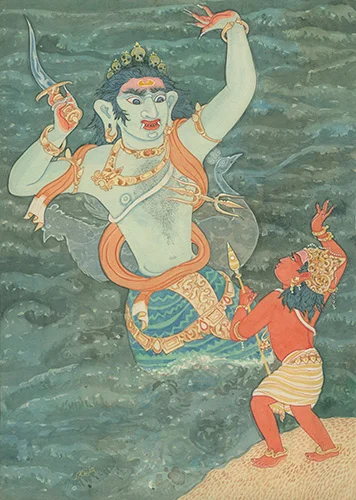
Skanda, also known as Murugan or Subrahmanya, is a powerful god often seen as the leader of celestial armies. He represents bravery and youthful energy. He’s famously depicted with a spear and riding a peacock, which symbolize concentration and overcoming selfishness. In Tamil traditions, he’s honored through six sacred places and festivals, and ancient stories tell of his battles against evil. People pray to him for courage, wise planning, and the strength to succeed.
Saraswati
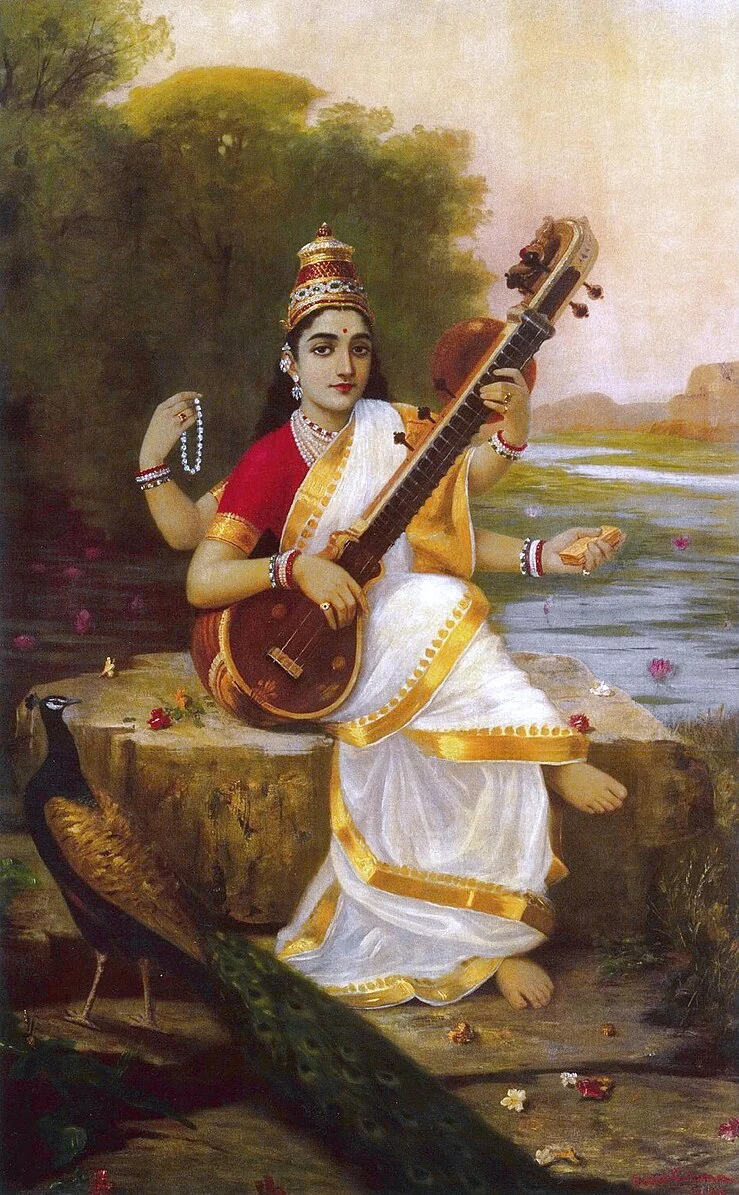
Saraswati is the goddess of knowledge, communication, and the arts. She’s often shown sitting on a white lotus or swan, symbols of purity and good judgment. She carries a veena (a musical instrument), a book, and a rosary, representing the balance of learning, creativity, and peaceful thought. People who study and create art worship her, hoping for clear speech, a good memory, and the ability to think easily. Because she’s linked to rivers, she also represents the constant flow of wisdom that nourishes and cleanses society.
Lakshmi
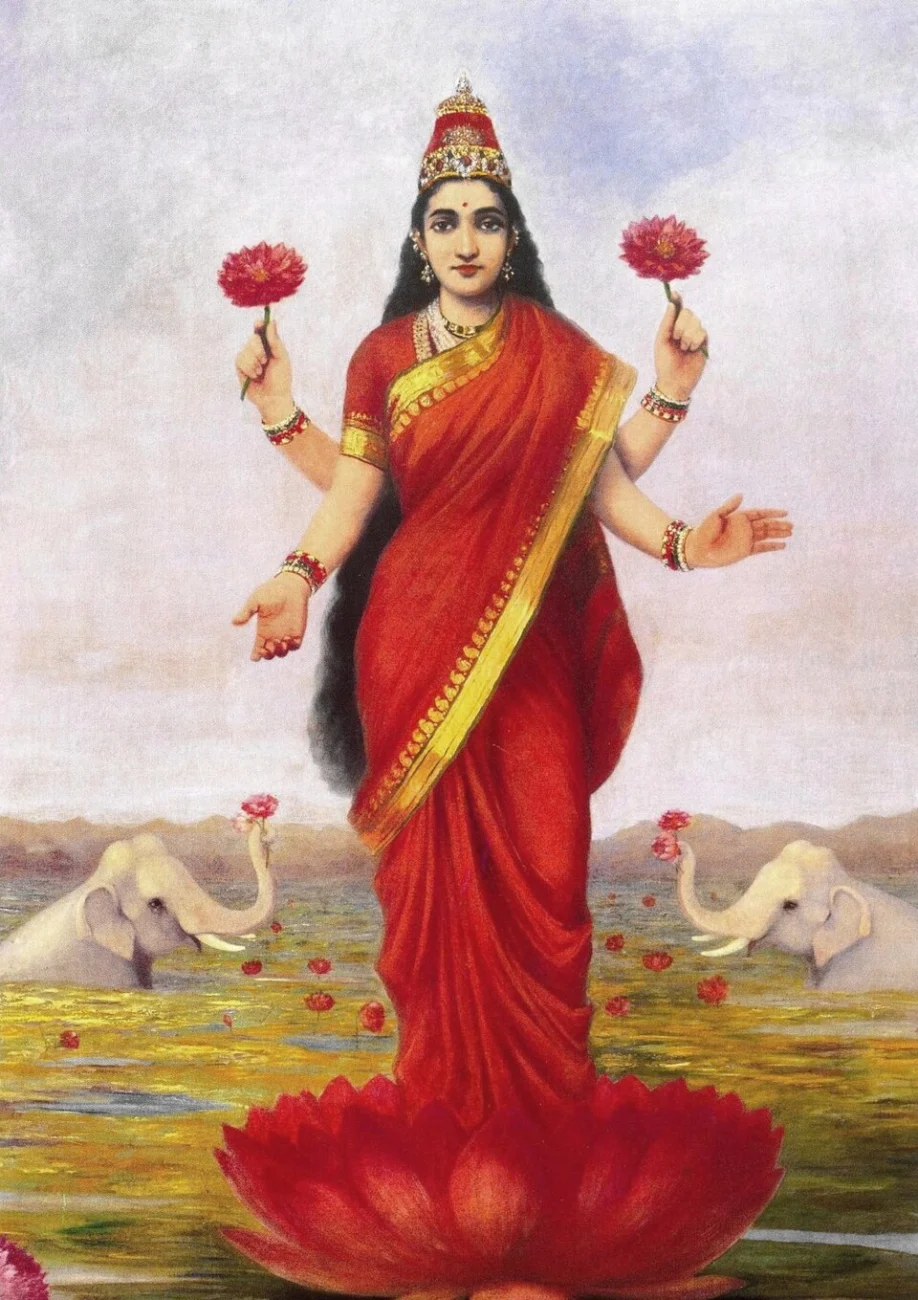
Lakshmi is the goddess of wealth, beauty, and good luck, frequently shown with lotus flowers and flowing coins. She’s celebrated during harvest times and festivals like Diwali, where lamps symbolize inviting prosperity and happy families. Known as Shri, she represents not just financial success, but also spiritual richness, suggesting that true wealth comes from living a virtuous life. She’s often linked to the god Vishnu, highlighting the connection between providing for needs and maintaining balance.
Kali
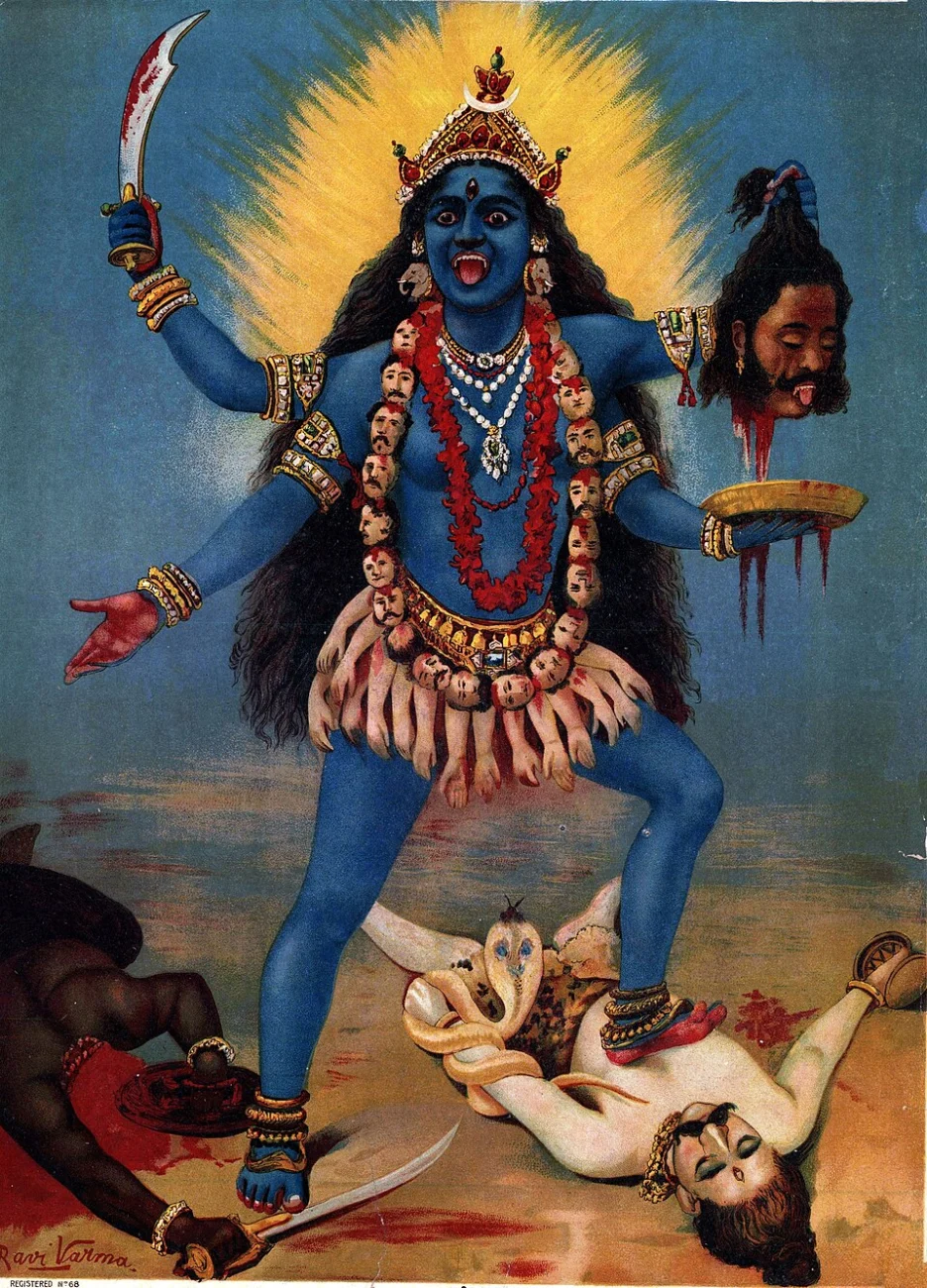
Kali is a powerful goddess who destroys ignorance and frees us from worldly attachments. Her image – often depicted with dark skin, a necklace of heads, and a sword – represents time’s ability to dispel illusions and awaken us. She is described as deeply compassionate, offering liberation from fear. People turn to Kali for strength, safety, and profound personal change.
Durga
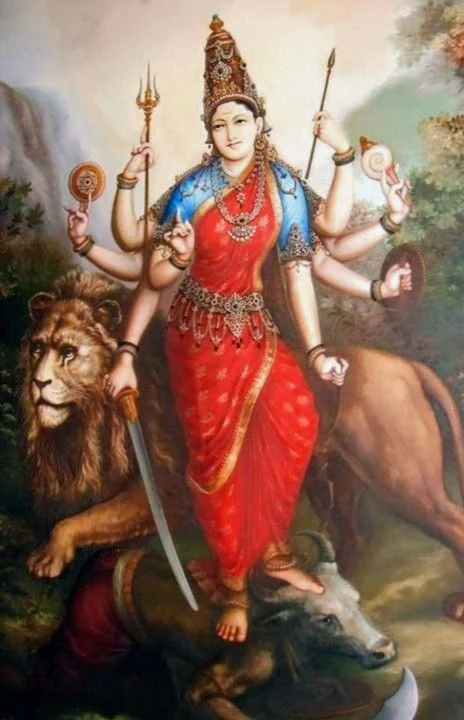
Durga is a powerful goddess known for defeating the demon Mahishasura and bringing balance back to the universe. Often depicted riding a lion or tiger and equipped with weapons from the gods, she represents a unified force for protection. The story of her power, found in the ‘Devi Mahatmya,’ describes her many forms and celebrates her as the energy that exists within everything. The nine-night festival of Navaratri honors her different aspects, highlighting strength, goodness, and her ultimate victory through kindness.
Vishnu (Narayana)
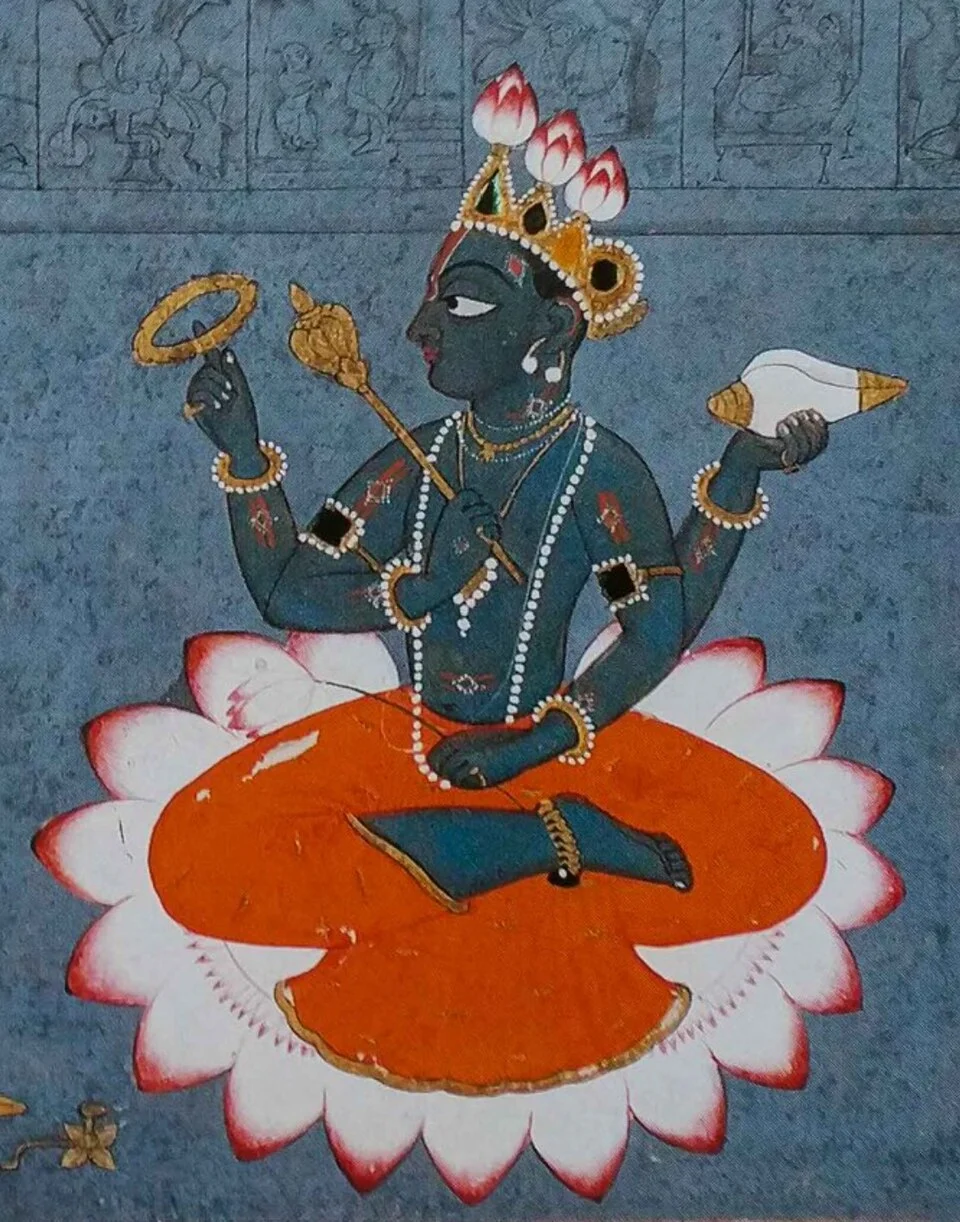
Vishnu is revered as the preserver of the universe, maintaining order and supporting all of existence. He’s often depicted with symbolic objects – a discus for protection, a conch for a sacred call to action, a mace for strength, and a lotus representing purity. When the world falls into chaos, Vishnu appears in forms like Krishna and Rama to restore harmony. Stories about his cosmic rest and the creation myth of the ocean churning demonstrate his constant role in sustaining life through endless cycles.
Shiva (Mahadeva)
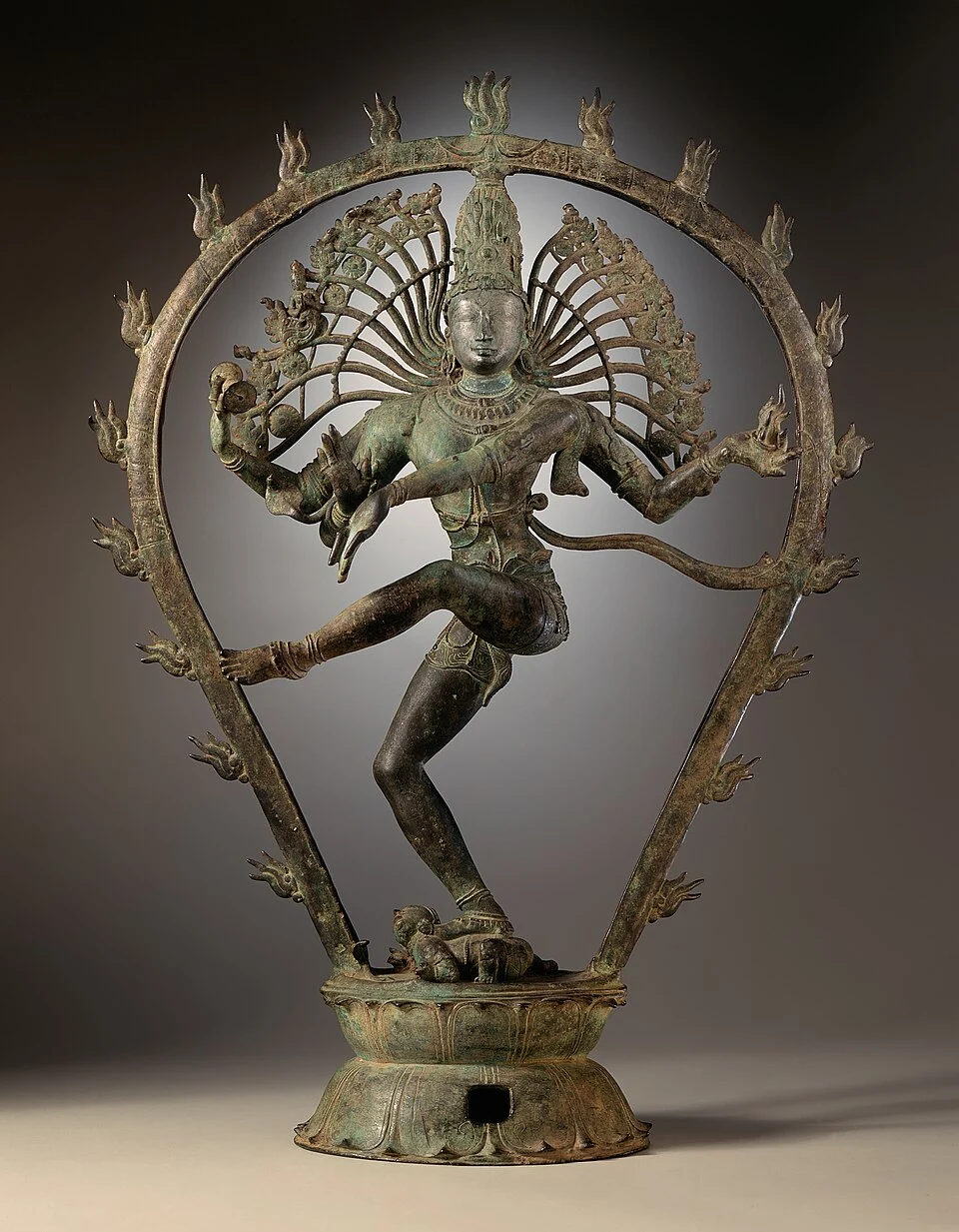
As a film buff, I’ve always been fascinated by Shiva. To me, he represents so much – a kind of powerful stillness, but also this incredible energy of creation *and* destruction, like the ultimate reset button for the universe. The image of Nataraja, dancing, really captures that – it’s not just about making things, but also letting them go. And all those symbolic details – the third eye, representing deep understanding, the trident showing control, and the Ganges flowing from his hair, symbolizing purification – they’re just so visually striking and rich with meaning. People connect with him through these simple, yet profound practices – focusing on the linga, chanting mantras, and meditating – all in pursuit of finding freedom within themselves. It’s a really compelling story, visually and thematically.
Adi Parashakti (Mahadevi)
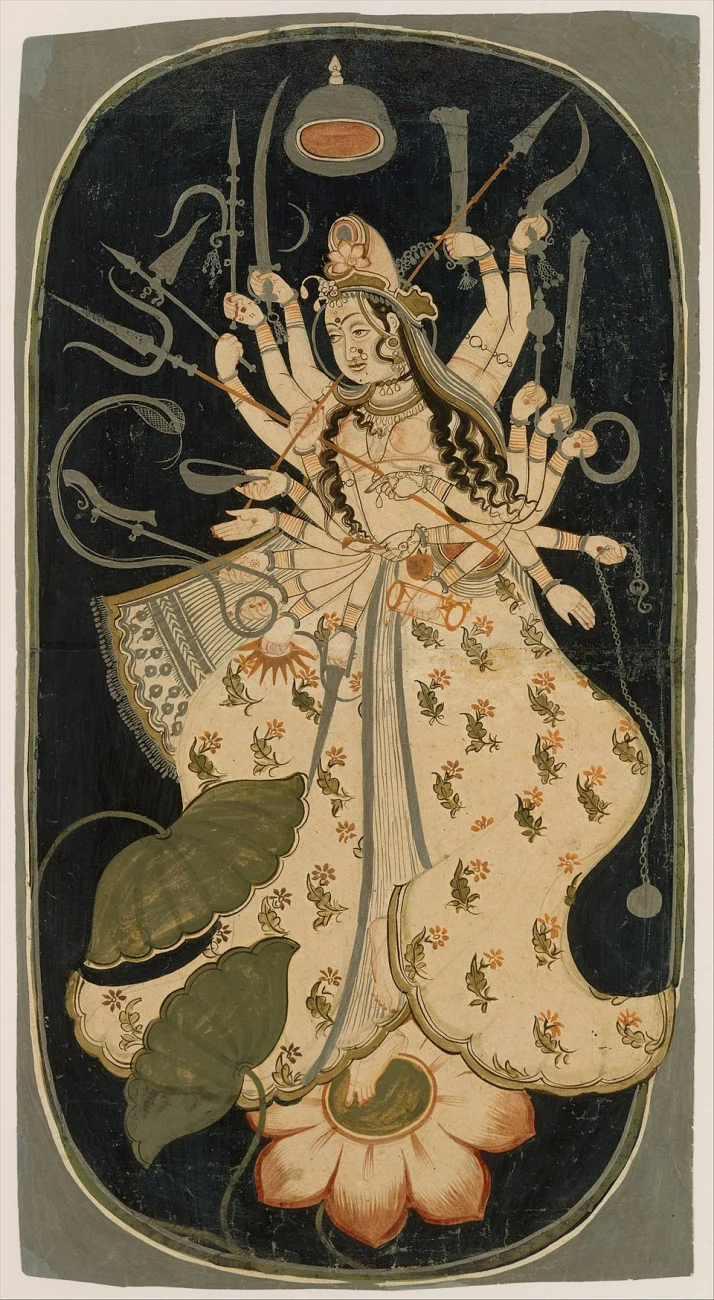
As a lifelong cinema devotee, I’ve always been fascinated by powerful, foundational forces in storytelling, and the concept of Adi Parashakti feels similar. She’s essentially seen as the very first energy, the source of everything – all the gods, the worlds we imagine, and even the rules that govern them. What’s incredible is that she appears in so many forms – Durga for protection, Kali for transformation, Lakshmi for prosperity, and Saraswati for knowledge. It’s like she’s the engine driving everything, the creative force behind the cosmic drama. When people worship her, they’re acknowledging that all the life and potential for liberation in the universe comes from her boundless energy – her *shakti*. It’s a really beautiful and compelling idea.
Read More
- Deepfake Drama Alert: Crypto’s New Nemesis Is Your AI Twin! 🧠💸
- Can the Stock Market Defy Logic and Achieve a Third Consecutive 20% Gain?
- Dogecoin’s Big Yawn: Musk’s X Money Launch Leaves Market Unimpressed 🐕💸
- Bitcoin’s Ballet: Will the Bull Pirouette or Stumble? 💃🐂
- SentinelOne’s Sisyphean Siege: A Study in Cybersecurity Hubris
- Binance’s $5M Bounty: Snitch or Be Scammed! 😈💰
- LINK’s Tumble: A Tale of Woe, Wraiths, and Wrapped Assets 🌉💸
- ‘Wake Up Dead Man: A Knives Out Mystery’ Is on Top of Netflix’s Most-Watched Movies of the Week List
- Yearn Finance’s Fourth DeFi Disaster: When Will the Drama End? 💥
- Ethereum’s Fusaka: A Leap into the Abyss of Scaling!
2025-10-19 16:46